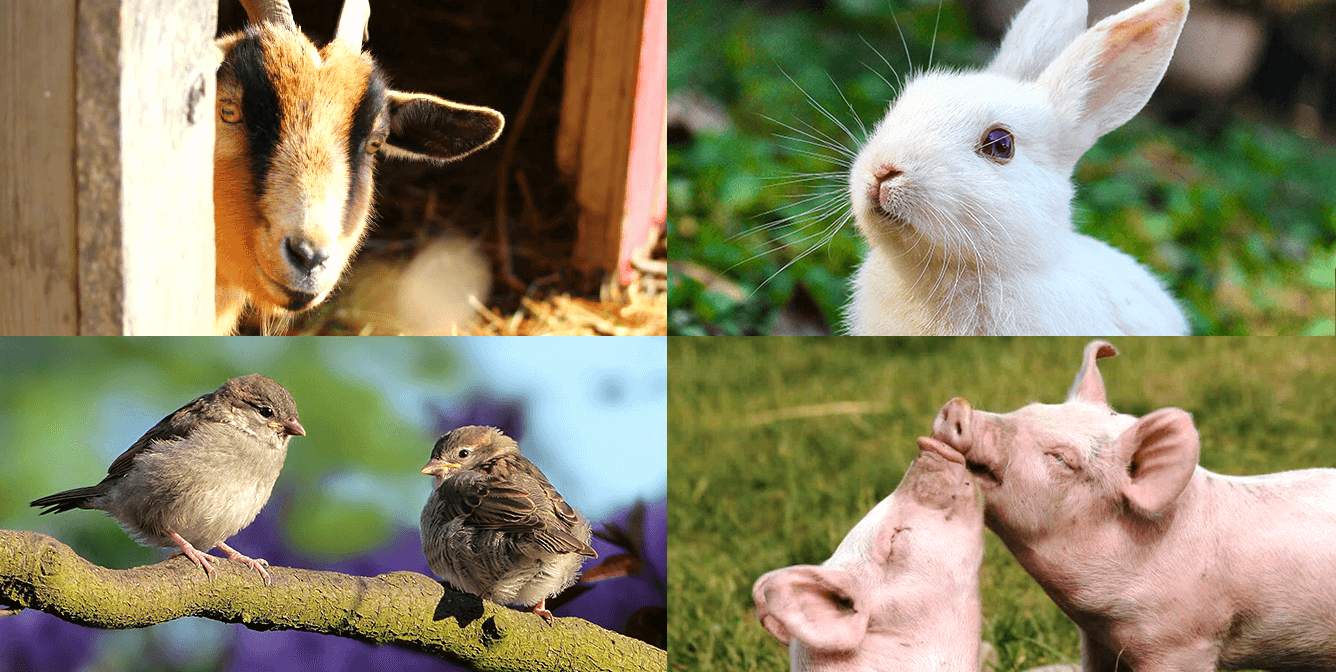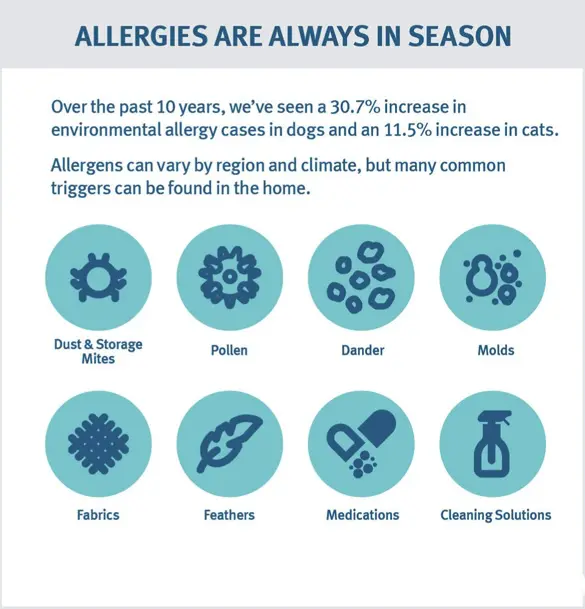
sen·tient /ˈsen(t)SH(ē)ənt/ adjective 1. able to perceive or feel things.
I recently presented at the Institute of Critical Animal Studies (ICAS) conference on “Recognizing Non-Human Animals as Sentient Beings”. I
Weeknights 7PM - Midnight
Weekends 8AM - Midnight

Allergy Season for Pets Explained
Spring is a season of renewal and rebirth—a time when nature bursts into life with vibrant colors, fragrant blooms, and warmer weather. For me it is the season to dive elbow deep in my flower beds which brings me so much joy but unfortunately also brings on a flare of allergic conjunctivitis. All that pollen!
As a veterinarian, Spring also marks an ideal period to address my patients’ allergies, particularly in dogs and cats. With the onset of seasonal changes, many pet owners notice an increase in allergic symptoms in their furry companions, making this time of year especially relevant for discussions on the challenges and management strategies for pet allergies.
One significant aspect of pet allergies is the differentiation between food allergies and environmental allergies. Food allergies in pets occur when the immune system develops an adverse response to certain dietary proteins such as beef, chicken, dairy, or grains. Interestingly, pets can develop food allergies at any age—even if they have consumed the same diet for years without incident. Over time the immune system may become sensitized to these proteins, resulting in chronic inflammation and a heightened state of reactivity. Environmental allergies (atopy) are caused by exposure to outdoor allergens like pollen, dust mite and molds, which tend to flare up with seasonal changes this time of the year.
Research in veterinary dermatology indicates that while environmental allergies are the primary concern in many cases, a significant number of pets present with a combination of both food and environmental allergies. In dogs, studies suggest that approximately 20–30% of those with atopic dermatitis also suffer from food allergies. In cats, the overlap is slightly less, with an estimated 10–20% of allergic cases involving a concurrent food allergy. *
This combination can complicate the clinical picture. The persistent irritation caused by a food allergy may prime the immune system to react more strongly when environmental allergens are encountered. This dual challenge can intensify clinical signs, making the management of atopic dermatitis more complex and requiring a thorough diagnostic approach, often involving elimination diet trials in addition to allergy testing.
An interesting comparison can be made in humans with gluten intolerance (non celiac) increasing allergic respiratory symptoms. **
For the same reason your veterinarian will emphasize the importance of good flea and tick control; when a pet is exposed to flea bites or tick infestations, the allergens present in the saliva of these parasites can trigger severe reactions especially in animals already predisposed to allergies.
Given these complexities, a multimodal management approach is essential for effective control of pet allergies. Multimodal therapy involves employing several strategies simultaneously to address the multifaceted nature of atopic dermatitis. For instance, veterinarians often combine allergen-specific immunotherapy (ASIT) with targeted treatments such as corticosteroids, cyclosporine or more recent innovations like Janus kinase (JAK) inhibitors (like Apoquel for instance) and monoclonal antibodies (Cytopoint). While ASIT remains the gold standard for long-term allergy control by desensitizing the pet to specific allergens (determined for your pet by intra-dermic skin testing and/or a blood test) newer targeted therapies can provide rapid relief from itching and inflammation.
In addition to systemic treatments, topical therapies play a vital role in multimodal management. Medicated shampoos, for example, are an excellent tool in reducing the load of environmental allergens on the pet’s skin. Shampoos containing chlorhexidine and miconazole are particularly effective in treating secondary infections—common in cases where allergic inflammation has compromised the skin barrier. Oatmeal-based shampoos and those enriched with phytosphingosine help soothe irritated skin, reduce inflammation, and restore barrier function. Regular bathing with these specialized shampoos not only alleviates itching but also helps prevent flare-ups by keeping the skin clean and less prone to allergen penetration.
Furthermore, nutritional supplements, particularly omega-3 fatty acids, are a valuable addition to the therapeutic regimen. Omega-3 supplements have been shown to reduce inflammation and improve overall skin health, thereby enhancing the effectiveness of other treatments. These supplements, combined with a carefully managed diet—especially important in cases where food allergies are implicated—contribute significantly to long-term management.
Spring, with its unique environmental challenges and opportunities for renewed commitment to pet health, provides veterinarians a timely platform to educate pet owners about the intricacies of pet allergies. It is a season to advocate for thorough diagnostic evaluations that differentiate between food and environmental allergies and to emphasize the importance of a multimodal management approach. By combining systemic therapies, topical treatments like medicated shampoos and nutritional supplements, veterinarians can offer comprehensive, tailored care that improves quality of life for pets suffering from chronic allergic conditions.
*Vici, A., et al. (2021). “Non-Celiac Gluten Sensitivity: An Overview.” Nutrients, 13(5), 1384.
** Olivry, T., DeBoer, D. J., Favrot, C., Mueller, R. S., Nuttall, T., & Prélaud, P. (2010). Canine atopic dermatitis: A review of the disease and its management. BMC Veterinary Research, 6, 1-11.
By Dr. Caroline Simard-Swimmer
Medical Director & Co-Founder
Pets After Dark

I recently presented at the Institute of Critical Animal Studies (ICAS) conference on “Recognizing Non-Human Animals as Sentient Beings”. I

Every year around this time pet owners are warned about toxic foods and holiday hazards. And while it’s important to

Life on the Inside: How to Keep Indoor Cats Happy (and Out of Trouble) There’s something fascinating about how differently
Pets After Dark is a subscription-based service that provides expert, local after-hours veterinary care.